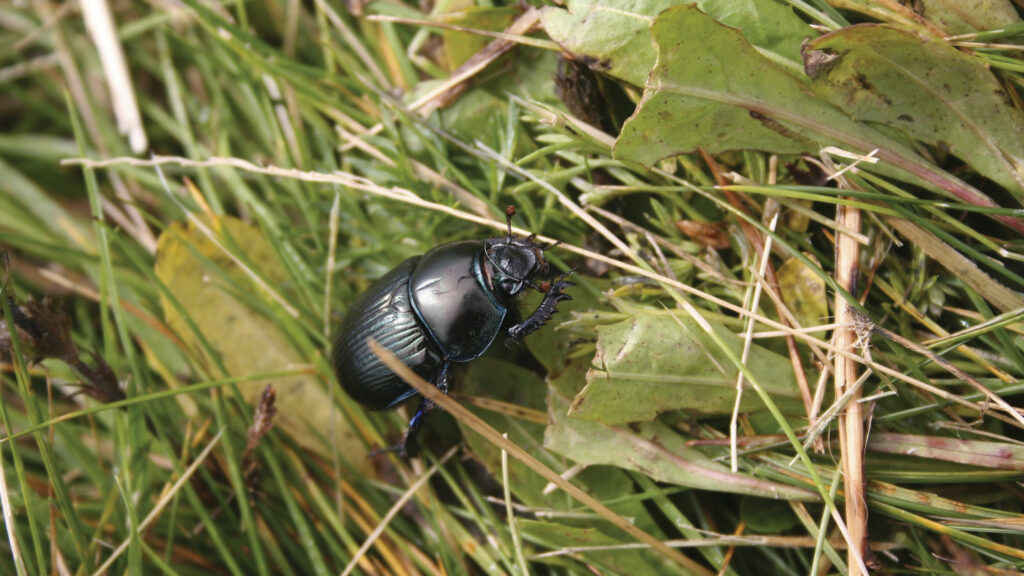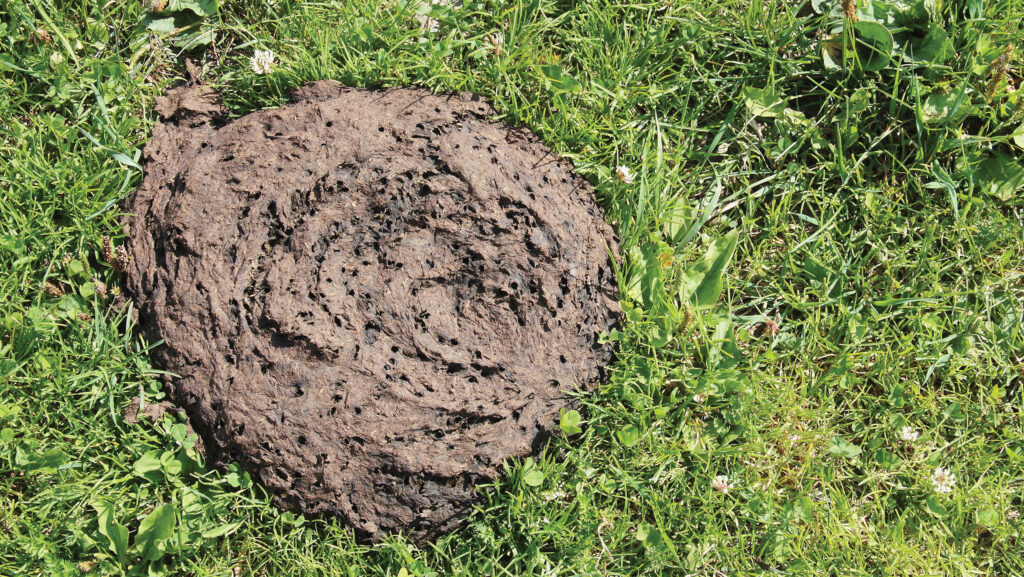How camera tech is speeding up dung beetle ID on-farm
 © Adobe Stock
© Adobe Stock Artificial intelligence is being used on a Devon farm to help identify species of dung beetle and monitor their activity as part of a silvopasture trial.
By training cameras to differentiate between species and record their abundance, the aim is to assess the impact of various tree-planting designs on beetle behaviour.
See also: How to attract dung beetles to your livestock farm
“Dung beetles are an unalloyed good and indicative of a good ecological status,” said Andy Gray, of Elston Farm, Copplestone, one of seven farmers who make up the Devon Silvopasture Network.
He has teamed up with Rothamsted Research applied entomologist Dr Kelly Jowett, who studies beneficial invertebrates in farming systems and is monitoring ecosystem changes during the 12-year Innovative Farmers tree-planting project.
The pair explained the thinking behind their dung beetle trial at Groundswell Festival, Hertfordshire, on 1 July.
“As the trees develop in the different layouts – the avenues and clusters of trees and shelterbelts – across the network, how do these [impact] dung beetle dispersal? Are they acting as barriers or corridors?
We don’t know. I suspect silvopasture is going to mimic the ancient landscapes that were shifting mosaics of trees and fields – to get to the bottom of that will be great,” said Kelly.
Dung beetle benefits
As well as offering shade and shelter, browsing of some tree species can help reduce worm burdens in livestock.
And while the association between trees and flies concerns some farmers, Andy argued that it exists “because the concentration of dung the larval stage lives in is always under the one tree in the field, so that’s where the flies are”.

Dung pat quality influences beetle activity © Adobe Stock
“If you spread your trees across the field, you’re going to spread the dung across the field and therefore reduce that [concentration].”
Furthermore, the dung beetle is a way of reducing those flies, he added.
See also: How silvopasture can help with heat stress
The ecosystem services provided by dung beetles save the UK cattle industry more than £367m/year, said Kelly, quoting 2015 research.
“They do this by eating the dung, taking away the breeding grounds of livestock pests and putting dung [deep] into the soil,” she said, adding that this also reduces methane emissions.
“Rather than dung degrading on its own, these beetles process it, which produces less methane and more of the other less-damaging gases, but fewer greenhouse gases on balance,” she explained.
She pointed out that dung beetle numbers have been really hit by chemicals used to control pests.
“Any changes we can make that benefit dung beetles, while maintaining sustainable farm systems and yields, will be beneficial to everyone.”
Camera setup
Andy’s observations of dung pats on his farm revealed how much insect activity takes place in and around them.
“It was fascinating to see the entire assemblage of insects that come in and what they’re all up to. [When flying about,] dung beetles are ridiculously energetic – they’re like the golden snitch in Harry Potter,” he said.
However, he could see the potential for harnessing artificial intelligence (AI) to study dung beetles because “no one has time to spend hours staring at a cowpat”.
Even so, it took a year to optimise the camera setup.
“One setback was that we couldn’t track the beetles in real time as we didn’t have the specificity of night-time cameras, and most activity is nocturnal – or when dung is really fresh,” Kelly explained.
Monitoring farm populations
The project is now working with Sensibee, an autonomous pollinator monitoring system that uses solar-powered camera stations to continuously photograph and identify visiting pollinators, using AI to provide real-time biodiversity data.
“Sensibee has concentrated on pollinators on flowers; we’re training it to see dung beetles on cowpats,” said Andy.
“We’ve proved that can work and captured images over some of farms. We’re getting an archive of images to find out what’s going on, without harming the beetles.
“We aim to have a unit that farmers can buy to monitor their own dung beetle populations, to inform their own worming practices and also generate more information about dung beetles around the country,” he added.
Types of dung beetle and their benefits
In the UK, dung beetles fall into two main types:
Dwellers
Dwellers live in the dung pat, where adults suck the juices of the dung, lay their eggs and the larvae develop.
They bury some dung in the top surface of the soil, but mostly they eat it very quickly. This then removes livestock pest breeding grounds.
Tunnellers (large and small)
Tunnellers roll balls of dung underground, up to 2m below the soil surface. They lay their eggs in chambers in little piles of dung.
Their action aerates and takes nutrients deep into the soil, improving the grass sward. In addition, livestock worm eggs are removed.
Source: Dr Kelly Jowett, Rothamsted Research
